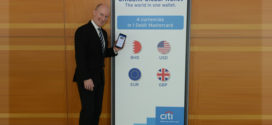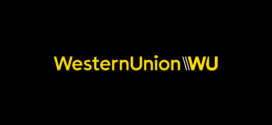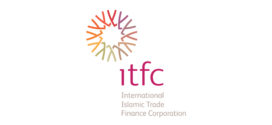Africa and Middle East Witness Increased M&A Activity: While Limited Confidence and Currency Fluctuations Influence Global M&A Deal Volumes
Deals involving high growth markets (HGMs) fall to levels reminiscent of the lowest point of the global downturn: KPMG International report
- Developed-to-high-growth acquisitions down 11% between H1 and H2 2013
- High growth market acquirers of developed market targets up 7% over the same period
- Increased FDI flows into Africa and Middle East in the wake of decelerating growth in China, Brazil and India
- Overall global M&A decreased by 13% during the course of 2013
 Dubai, 26 March 2014: KPMG International’s latest High Growth Markets International Acquisition Tracker reveals that rising domestic confidence in many developed markets is not yet translating into an increase in cross-border acquisitions.
Dubai, 26 March 2014: KPMG International’s latest High Growth Markets International Acquisition Tracker reveals that rising domestic confidence in many developed markets is not yet translating into an increase in cross-border acquisitions.
Deals between developed market acquirers and high growth market targets (D2H) continued the downward trend of the last three years, falling back to 2009 levels in H2 2013. To put it in context, 2009 was the lowest point of the global downturn, with the fewest D2H transactions since pre-2005. On the other hand, high growth market acquirers (H2D) appear to be more proactive, prioritizing deals in developed markets over investments in other high growth markets. Currency fluctuations also appear to be influencing the pattern of deals coming out of key high growth markets, such as South America.
“Globally speaking, the vehicle powering deals involving high growth markets is stuck in neutral,” said Tom Franks, KPMG’s Global Head of Corporate Finance. “We are seeing a trend towards high growth markets acquiring in developed markets in order to diversify their portfolios. But currency movements have significantly hampered those efforts, particularly in markets in South America, and we have seen a relative upswing in investments from these markets into other high growth markets.”
According to UNCTAD’s annual survey on investment trends, foreign direct investment (FDI) flows into African nations increased 5% during 2013, surpassing US$50 billion p.a. It is interesting to note that this growth took place at a time when global FDIs reduced by approximately 18% over the same period. In the wake of decelerating growth in China, Brazil and India, global investors are warming up to the prospect of investing into Africa.
“As deal flows improve and untapped opportunities emerge, it is inevitable that Africa will experience a pick-up in investment activity. Not surprisingly, we have seen firms, both globally and in the MENA region, increasing their focus on Africa” said Vikas Papriwal, KPMG UAE’s Head of Transactions and Restructuring. “The region’s economic prosperity is complimented by an increasing ‘middle class’ which has more than tripled in population during the last 30 years. With mineral wealth, strong demographics (market size and young human capital market), and improving political and regulatory environments, we expect Africa to continue to attract the interest of international investors.”
Recently Danone and The Abraaj Group, a leading investor operating in growth markets, announced a partnership agreement whereby Danone will join Abraaj in the acquisition of Fan Milk International. With 2012 sales of around €120 million, Fan Milk is the leading manufacturer and distributor of frozen dairy products and juices in West Africa.
Middle East in-region activity is also on the rise. Fajr Capital recently announced it has acquired a substantial minority stake in a leading GCC-based engineered components manufacturing company. The company has a solid footprint in the MENA region, with a proven track record in exporting high quality machined components to the US and European markets.
Exchange rates influencing deal patterns
With the dollar generally on an upward trajectory during 2013, the commercial attractiveness of H2D deals inevitably suffers as targets become more expensive to acquire. Conversely, opportunities in other high growth markets become more attractive.
Hence Brazil saw a significant decline in M&A activity into developed countries, but an increase in H2H activity. Similarly, currency depreciations in Argentina, Colombia and Peru during 2013 were reflected by a decline in H2D activity from these markets, but an increase in H2H transactions.
“The combined effect of decreased purchasing power due to unfavourable currency movements and a more conservative approach by Brazilian corporates has led to a lowering of M&A activity,” said Claudio Ramos, Lead Partner for Transactions and Restructuring in Brazil and South America. “With a slowing economy, there is less appeitite for risky and pricey manouvers in developed countries.”
D2H deals continue steady decline
The number of developed market acquisitions of high growth market targets (D2H) fell by 11 percent between H1 and H2 2013, from 575 to 512 deals. There were notable declines in North America, where deal volumes fell by over 20 percent; in Hong Kong, which saw a 23 percent decline; and in the UK, where D2H deal volumes decreased by 18 percent.
Bucking this trend, however, were Italy, Germany and Singapore, which all saw significant increases in D2H activity. Italy D2H deals rose 63 percent, German D2H deals rose by 37 percent, while Singapore D2H deals recorded a 23 percent increase. Spain also saw small increases in the number of deals involving domestic acquirers of targets in high growth markets (5 percent).
China the favoured location
In terms of D2H targets, China is still the most popular country market, with 76 deals. However, it is quite short of the 120-plus deals routinely completed before the downturn. 2013 was, in fact, the lowest cumulative total of D2H deals into China since pre-2005.
Other BRIC markets (Brazil, Russia and India) all saw declines between H1 and H2 2013 in incoming D2H deals of around 20 percent, reflecting the overall decline in D2H acquisitions:
- Brazilian targets fell from 56 to 45;
- Russian targets decreased from 44 to 35; and
- India saw a decline from 51 to 42 deals.
Other notable declines in D2H volumes included South America (excl. Brazil), where the number of deals slumped by 29 percent, from 48 to 34; and also South East Asia, where deal totals fell from 95 to 81, a reduction of 15 percent.
“Although domestic confidence in North America and Western Europe has risen recently, we are not seeing that confidence reflected in the D2H deals market,” said Franks. “Companies seem to be eschewing high growth opportunities in favour of safer options.”
H2D deals holding steady
In contrast to the on-going decline in D2H deals, the appetite for deals involving high growth market acquirers of developed market targets (H2D) seems to be more robust.
H2D deals completed between July and December 2013 climbed from 177 to 190, a rise of 7 percent. While the 190 deals completed in H2 should be considered a welcomed return; it remains the lowest total since H2 2006, matched only by the 191 deals in H2 2009.
Asian markets, in particular, enjoyed a strong performance in H2 2013, in terms of acquisitions of developed market targets with China being particularly active. There were 51 H2D deals involving Chinese acquirers, an impressive 70 percent rise on the 30 deals completed during H1. This may be partially explained by a change in leadership during H1, which led to a backlog of deal completions. The Chinese Yuan also maintained a strong performance against the dollar during H2 2013, which may have facilitated Chinese deal-making.
Other strong performers include:
- Malaysia: the number of deals rose by 63 percent to 13;
- South and East Asia: H2D deal volumes increase from 31 to 36 during H2 2013;
- Central America and the Caribbean: deal volumes rose from 8 to 15; and
- Sub-Saharan Africa (excl. South Africa): H2D deals increased from 1 to 7.
Two of the biggest decliners were Brazil and South America (excl. Brazil) which both saw H2D deal volumes tumble by around 50 percent.
H2H activity struggling
H2H deals appear to be mirroring the downward trend in D2H deals and indeed, of the global deals market overall, where overall global M&A decreased from 1273 deals to 1221 deals over the course of 2013. The number of H2H deals during H2 2013 fell from 120 to 108, the lowest volume since H1 2006 and a 10 percent drop.
The following regions saw a significant fall-off in activity:
- The Commonwealth of Independent States (CIS – former states of the USSR): deal volumes fell 32 percent, and when combined with a total lack of H2D deals involving CIS acquirers this suggests a very tough time for the region’s M&A market;
- South America (excl. Brazil): deals involving local targets fell from 12 to 6; and
- South and East Asia: deals fell from 16 to 6.
China was also one of the few countries that saw a significant increase in H2H deals as acquirers, with the number of deals rising by 50 percent, from 4 to 8. Brazil also saw a slight rise, from 7 to 8, as did South America (excl. Brazil).
Taken together with the rise in H2D deals, the H2H figures suggest that high growth market companies are prioritizing investments in developed markets over opportunities in other high growth markets, as they develop their portfolios.
 Cash And Trade Magazine For Cash and Trade professionals in the Middle East
Cash And Trade Magazine For Cash and Trade professionals in the Middle East




